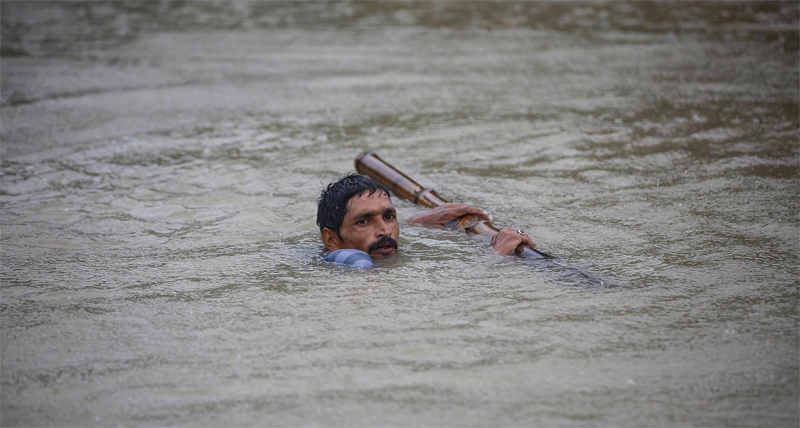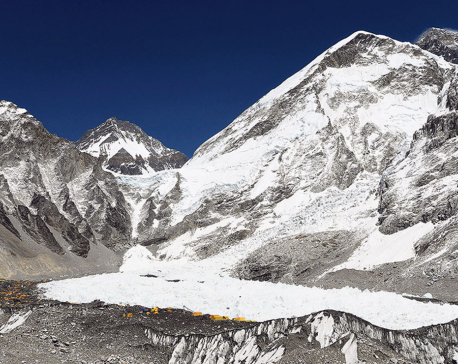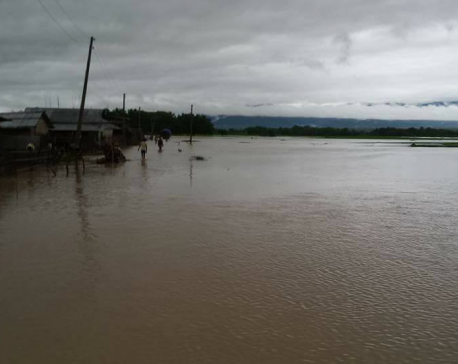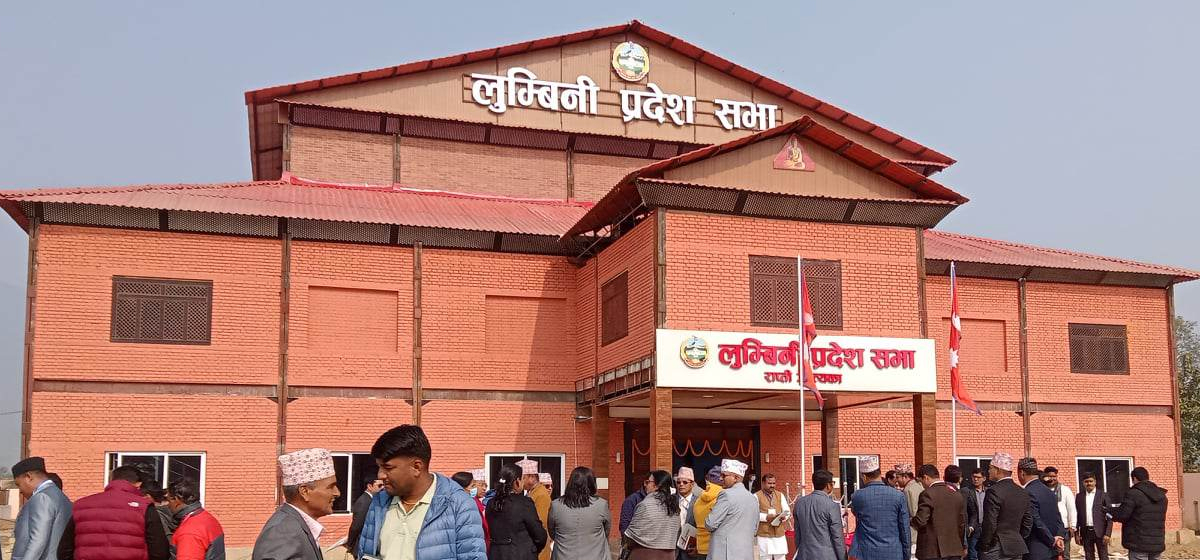
OR


Tom Robertson
The author is an environmental historian and executive director of the Fulbright-Nepal office in Gyaneshwor. Views are his own and don’t reflect Fulbright program policy.news@myrepublica.com
In one country a 7.8 quake leaves a path of devastation, collapsing homes and twisting roads; in another, the same magnitude earthquake takes few lives and destroys almost no buildings.
Recently my two homes—the US and Nepal—have been pounded by “natural” disasters. In August, several hurricanes with very friendly names—Harvey, Irma, and Maria—pummeled Texas, Florida, and Puerto Rico in a very unfriendly fashion. In Nepal in 2015, two earthquakes shattered homes and families across the hills of central Nepal. More recently, in August, vast flooding in Nepal’s flatlands destroyed the fields and homes of thousands of farmers.
Calling these natural disasters is misleading: they are also social disasters, in both cause and consequence. “Natural calamities frequently do not just happen,” the historian Ted Steinberg writes in Acts of God: The Unnatural History of Natural Disaster in America, “they are produced through a chain of human choices and natural occurrences.” Although of course nature shapes earthquakes, hurricanes, and floods, many human decisions augment their destructive power and tragic after-effects.
The causes
Historical detective work shows that almost all natural disasters are partly man-made. Hurricanes are a good example. Although a yearly occurrence generated by the energy collected in the Atlantic Ocean’s tropical waters, the dramatic increase in carbon-spewing fossil fuel use over the last 150 years have fanned their fury. Global warming energizes the ocean water that transforms ordinary storms into monster storms.
The damage by Harvey and Irma in Texas and Florida owed in large part to irresponsible human construction going back decades. People built houses, buildings, and roads where they knew flooding was likely. They drained and filled the wetlands that could have softened the storms’ punches and channeled excess water. Greed trumped good sense.
Governments turned a blind eye.
Nepal’s earthquakes had geologic, not human causes. But earthquake damage is another story entirely. In one country a 7.8 earthquake leaves a path of utter devastation, collapsing houses and twisting roads; in another, the same magnitude earthquake takes few lives and destroys almost no buildings. Life returns to normal within days. The difference: not nature but planning and preparedness. Countries that zealously retrofit buildings, enforce design regulations, train their public officials and citizens, and prepare emergency rescue and medical services encounter fewer disasters.
Nepal’s recent Tarai floods also had human origins. Mother Nature did not cut the forests and mine the streams of the Churia hills, nor pile up the mud and rock embankments that trap floodwaters in low-lying areas. Humans did.
Disaster’s second wave
Poorly designed relief and rebuilding programs can also cause as much devastation and tragedy as the initial disaster. There’s nothing natural about this. Such programs can save lives and rebuild society better than ever—or turn the original disaster into a series of ongoing disasters.
In particular, if they overlook the special needs of the poor and historically pushed aside, relief and recovery programs can create a second flood of problems.
In the US, Hurricane Katrina in New Orleans in 2005 laid bare how little one of the richest governments in the world had done for some of its most vulnerable citizens, many of whom were trapped as flood waters filled their houses. Harvey, Irma, and Maria have shown something similar, particularly Maria in Puerto Rico.
“The attempt to restore order after a disaster,” historian Steinberg writes, “often winds up justifying and thereby preserving a particular set of social relations. Whose definition of normality rules during the recovery process? Whose vision of society is at stake when nature and culture collide?”
Nepal has similar examples: one relatively well known, the other deserving far more attention.
Relief programs after Nepal’s 2015 earthquakes threatened to further sink some of Nepal’s most vulnerable, hill residents without land titles. At first, governmental relief programs insisted that those who lost their homes produce documents proving land ownership. Those who didn’t have proper papers—and many Nepalis don’t for one reason or another, generally not their own fault—were out of luck. Full stop.
In addition, recovery programs failed to recognize that some flattened structures housed multiple families with separate kitchens, each entitled to their own government assistance. Many of those who didn’t fit the one house-one family model missed out.
Recently, however, the National Reconstruction Authority (NRA) has creatively adjusted its policies, allowing utility bills and statements from neighbors to verify the housing situation of the landless before the quakes. In addition, they will provide funds with which to purchase land, helping to address the core problem. If implemented, this will make a real difference.
August’s Tarai floods seem to be creating a problem akin to the earthquake situation: in government relief programs, thousands of landless farmers without formal documentation could find themselves missing out on desperately needed agricultural recovery funds.
In this case, which journalists Bhola Paswan and Peter Gill have researched, tenant farmers—many of them caste or ethnic minorities who have worked the land for years and who still owe their landlords whether yields are high or low, even if a flood kills crops or washes away fields—can’t access recovery funds because they lack the legal documents to prove their tenancy. Mostly illiterate, they stay clear of written contracts with landowners. Landlords generally prefer it that way, too, to avoid granting tenancy rights.
Let’s hope the government can find a creative, people-centered solution to this problem just as the NRA did.
Disastrous thinking
When we call something natural, we suggest it is outside of human control, as if inevitable. Human decisions seem not to play a role. Poor judgment, lack of foresight, politics, incompetence: not a factor!
Such thinking obscures how natural disasters are in part man-made, and that humans often deserve some, or even most, of the blame. Nature and human society are far more woven together than we realize.
But this also means that human action can improve the situation. We can’t stop hurricanes that have blown past, but we can curtail the reckless carbon use that will make future Harveys and Marias more destructive. We can’t prevent earthquakes that have already split the earth, but we can better prepare for the next one.
We can’t make flood waters flow uphill or return to monsoon clouds, but we can create relief and recovery programs that help those hit hardest by this “natural” disaster. There’s a saying attributed to Mahatma Gandhi that, whether apocryphal or not, holds a lot of truth: “The true measure of any society can be found in how it treats its most vulnerable members.”
The author is an environmental historian and executive director of the Fulbright-Nepal office in Gyaneshwor. Views are his own and don’t reflect Fulbright program policy
You May Like This

Himalayan glaciers melting 65 percent faster than previous decade: Study
KATHMANDU, June 22: Himalayan glaciers providing critical water to nearly two billion people are melting faster than ever before due... Read More...

Natural disasters kill 890 people every year
JHAPA, May 18: At least 890 people die and 1,771 are injured every year in Nepal due to natural disasters,... Read More...

String of disasters curtail Upper Bhotekoshi's capacity
KATHMANDU, July 8: The Bhotekoshi River flowed over Upper Bhotekoshi Hydropower dam following the Tuesday' flash flood in the river. Read More...



Just In
- Rautahat traders call for extended night market hours amid summer heat
- Resignation of JSP minister rejected in Lumbini province
- Russia warns NATO nuclear facilities in Poland could become military target
- 16th Five Year Plan: Govt unveils 40 goals for prosperity (with full list)
- SC hearing on fake Bhutanese refugees case involving ex-deputy PM Rayamajhi today
- Clash erupts between police and agitating locals in Dhanusha, nine tear gas shells fired
- Abducted Mishra rescued after eight hours, six arrested
- Forest fire destroys 13 houses in Khotang















Leave A Comment